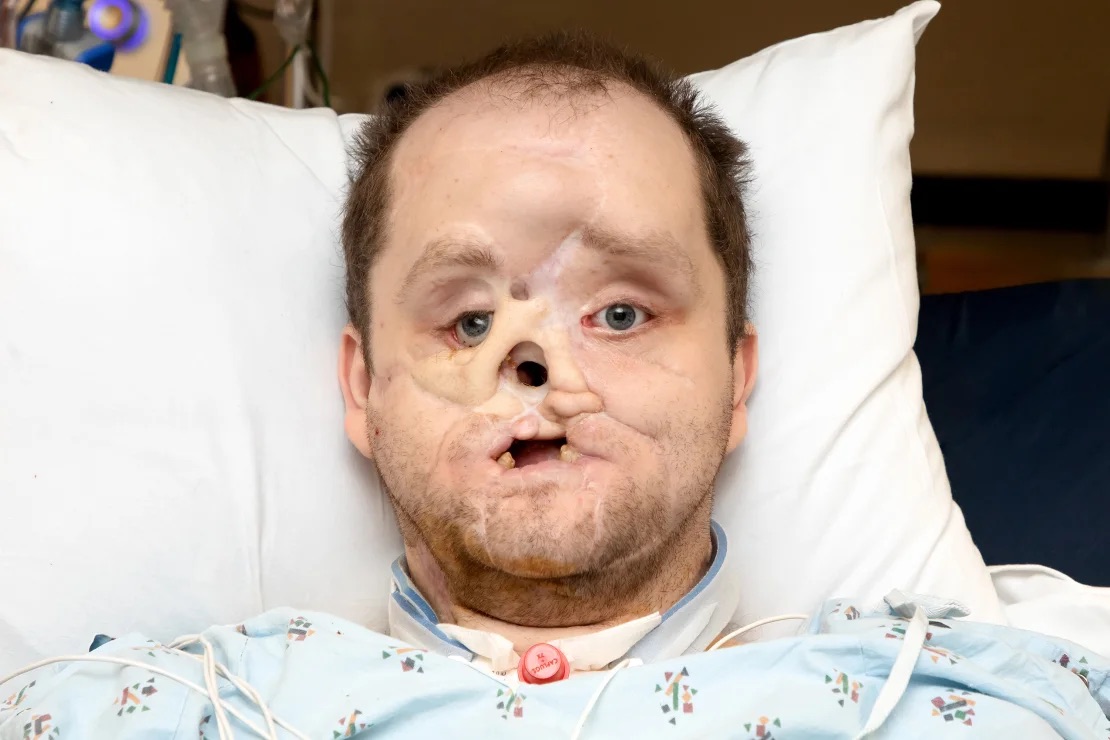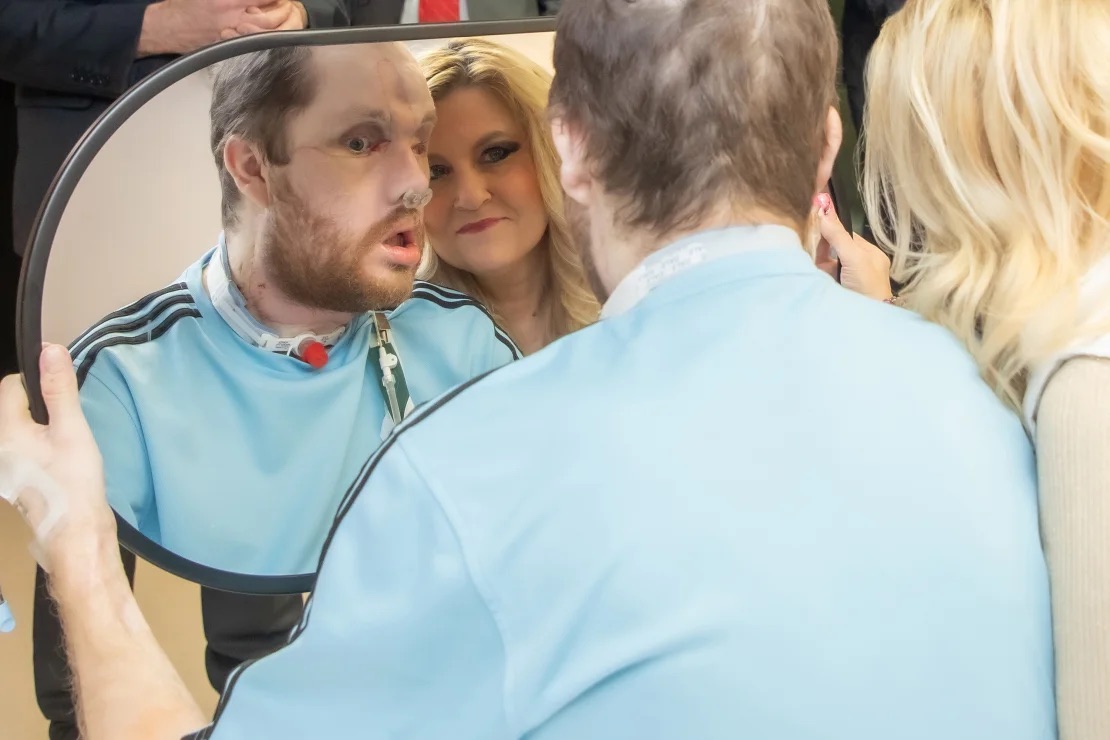ROCHESTER, USA — Ten years after a traumatic suicide attempt left his face severely damaged, Derek Pfaff, a 30-year-old from Harbor Beach, Michigan, is embracing a second chance at life thanks to a groundbreaking face transplant performed at the Mayo Clinic earlier this year.
Pfaff’s story is a testament to resilience, medical innovation, and the importance of mental health awareness.
In March 2014, Pfaff, then a college student under significant stress, attempted suicide by shooting himself outside his family home.

His father, Jerry, found him in a snowbank near the garage after noticing their gun cabinet was open.
“I don’t remember anything,” Pfaff recalled.
“I don’t remember getting the gun, going outside, shooting myself, or the weeks afterward.”
A Life-Altering Injury
The gunshot left Pfaff’s face severely disfigured, resulting in the loss of his nose, lips, teeth, and portions of his forehead.
He faced profound challenges: impaired breathing, difficulty speaking, an inability to chew, and the loss of basic expressions such as smiling.

Despite undergoing 58 reconstructive surgeries, Pfaff’s facial functionality and appearance remained limited.
“There was still a lot of work that needed to be done, and there was really nothing more that that hospital or facility could do for him,” said his mother, Lisa.
A doctor suggested a face transplant as the only viable option to restore his functionality and quality of life.
A Complex and Pioneering Procedure
In February, a team of over 80 medical professionals at the Mayo Clinic performed a 50-hour face transplant operation on Pfaff.
Led by Dr. Samir Mardini, chair of plastic surgery and surgical director of the clinic’s Reconstructive Transplant Program, the team replaced approximately 85% of Pfaff’s face with donor tissue.
The intricate procedure reconstructed major facial structures, including parts of the forehead, the nose, cheekbones, upper and lower jaws (complete with teeth), eyelids, and all facial muscles responsible for expressions.
Additionally, surgeons employed a novel microsurgery technique to transplant a tear drainage system, allowing Pfaff’s tears to flow naturally through his new nose.
“This isn’t just reconstructive—it’s restorative,” Dr. Mardini explained.
“We’re not building parts; we’re restoring fully formed facial structures. It’s a life-giving procedure.”

To ensure precision, the team used advanced 3D printing and virtual surgical planning.
CT scans of Pfaff and the donor’s faces allowed engineers to create customised surgical guides, enabling surgeons to map and match critical facial nerves for functionality.
“We connect the nerves so that when Derek thinks about smiling, the donor muscles respond,” Mardini said.
“The first time he smiled was a moment of triumph.”
A Transformative Moment
On March 5, exactly 10 years after his suicide attempt, Pfaff was allowed to see his new face for the first time.
Psychiatrists had prepared him for the reveal, and mirrors in his hospital room were covered during the initial recovery period to ensure he could process the transformation gradually.
“It was a miracle for him to see himself,” Lisa said.
“He looked in the mirror and said he looked like a person again. That was his second chance.”
Today, Pfaff can speak more clearly, express emotions, and perform functions that many take for granted.
He is undergoing physical therapy, speech therapy, and taking immunosuppressive medications to prevent transplant rejection—treatment he will need for life.

Raising Awareness for Mental Health
Pfaff hopes to use his experience to promote suicide awareness. “The sun will rise tomorrow,” he said.
“You just have to stay positive, no matter what the situation is. Look past the down.”
His journey underscores the importance of recognising and addressing mental health struggles.
Globally, more than 720,000 people die by suicide annually, according to the World Health Organization, with young people aged 15 to 29 particularly at risk.
In the United States alone, suicide claimed nearly 50,000 lives in 2022, or roughly one every 11 minutes, according to the CDC.
Many victims lack prior mental health diagnoses, making awareness and prevention strategies critical.
Pfaff’s family, deeply proud of his resilience, plans to celebrate Thanksgiving with extended relatives while reflecting on his recovery.
“We’re just hoping that Derek’s journey will inspire others and open doors for sharing the importance of recovery and mental health,” Lisa said.
Pfaff’s new face is more than a medical achievement—it is a symbol of hope, strength, and the possibility of renewal.
As he continues to heal, he is determined to make a difference, turning a decade-long journey of pain into a powerful story of survival and advocacy.
For those struggling with suicidal thoughts, help is available:
In the U.S., call or text the Suicide & Crisis Lifeline at 988.
Globally, resources like Befrienders Worldwide provide assistance.







